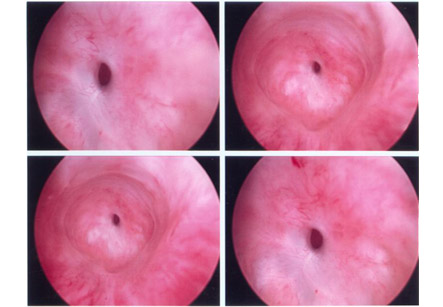Urethral Dilatation
Introduction
Urethral Dilation is an age-old procedure, which is usually performed to dilate, or stretch the urethra (the tube leading from the bladder that passes urine) to restore it to its normal diameter.
Indications:
Urethral Dilation is commonly used to treat urethral strictures. Stricture or narrowing of the urethra can slow down the flow of urine and causes serious health problems. Urethral stricture may be caused by inflammation or scar tissue from urosurgery, disease, injury or due to pressure from an enlarging tumor near the urethra.
Urethral Dilation procedure is more common in males as their longer urethra is more amenable to stricture, due to scarring from trauma or infection.
Urethral Dilation is considered an effective tool in managing lower urinary tract complaints in women. It makes urine flow easier and helps to empty the bladder more effectively.

Screening and Diagnostic Tests
Before undergoing the procedure, the patient may need to undergo the following investigations:
1. Cystoscopy
2. Post-void residual volume.
3. Retrograde urethrogram.
4. Tests for chlamydia and gonorrhea infection.
5. Urine exam.
6. Urinary flow rate.
7. Urine culture.
Results:
Depending on the length of the stricture, this procedure is successful in about 50 per cent cases during first attempt.
Individuals who redevelop a stricture after one of these procedures may require more detailed reconstruction, as success of subsequent attempts is significantly lower.
If urethral dilation is not successful or possible, a surgery may be needed to correct the condition.
Benefits
Urethral Dilation makes urine flow easier and helps to empty the bladder more effectively.
Patient should drink plenty of fluids for a few days, following the procedure to reduce chances of infection.
The procedure can relieve symptoms such as painful urination, dribbling during urination, and frequent urinary tract infections.
Urethral Dilatation can avoid chronic bladder infections and reflux of urine into the ureters and kidneys. This may happen if the pressure inside the bladder builds up leading to permanent damage to the kidneys.
Procedure:
Urethral Dilatation is usually performed under general anesthesia.
The urethra may be dilated during cystoscopy by inserting a thin instrument to stretch the urethra. Besides visualization, cystoscopy also serves as a dilator for the urethral canal, enabling urine to pass. The cystoscope is lubricated for a smoother entry through the delicate wall.
Intermittent catheterization may be performed to empty the bladder.
Patient himself may be able to treat the stricture by learning to dilate the urethra at home.
Associated Risks
The complications of urethral dilatation can be divided as follows:
Immediate complications:
• Creation of a false passage
• Bleeding
• Urethral perforation
• Rectal injury
Early complications:
• Sepsis
• Urinary retention
• Recovery
Patient may have slight bleeding from the area and possibly some blood may be expected in the urine for one to two days. It may also be painful to pass urine for a few days.
Patient should drink plenty of fluids for a few days, following the procedure to reduce chances of infection.
A course of antibiotic is prescribed for about three months to treat inflammation, if any.
Improvement in the bladder symptoms and complete emptyingof bladder is experienced by most of the patients. However, this may not be permanent and the procedure sometimes needs to be repeated.
Care at home:
After leaving the hospital, patient is given a brief discharge summary of the admission. This holds important information about the inpatient stay and the operation. In the first few weeks after the discharge, if there is any reason to attend another hospital or meet your general physician, this summary should be carried along to allow the doctors to see details of the treatment.
After going home, patient should drink about twice as much fluid as normally would be taken for the next 24-48 hours to flush the system thoroughly. A stinging or burning sensation may be felt during urination and there may be passage of lightly bloodstained urine. This discomfort and bleeding will resolve rapidly, if drinking plenty of fluid is continued.
Precautions:
People who self-dilate should be trained by a medical professional to avoid accidental tearing the urethra or causing an infection. Doctors may also prescribe a course of antibiotics to reduce risk of infection. All adverse symptoms occurring during self-treatment should be reported to the doctor immediately. This includes pain during dilation, painful urination afterwards, or blood in the urine.